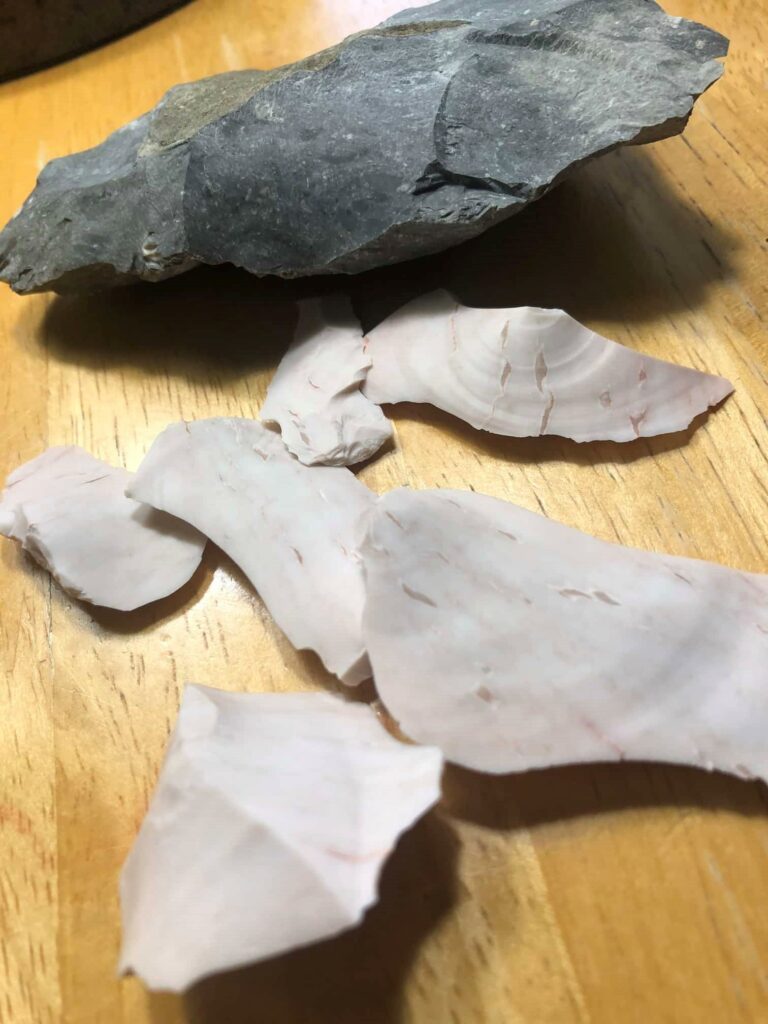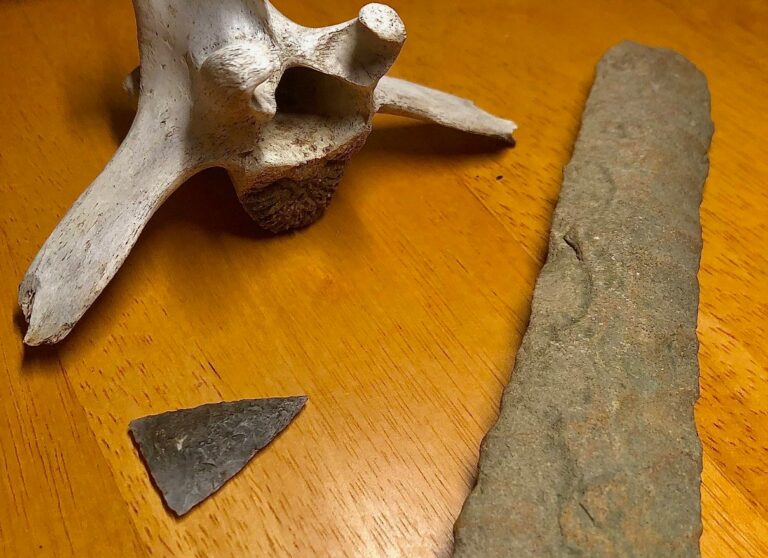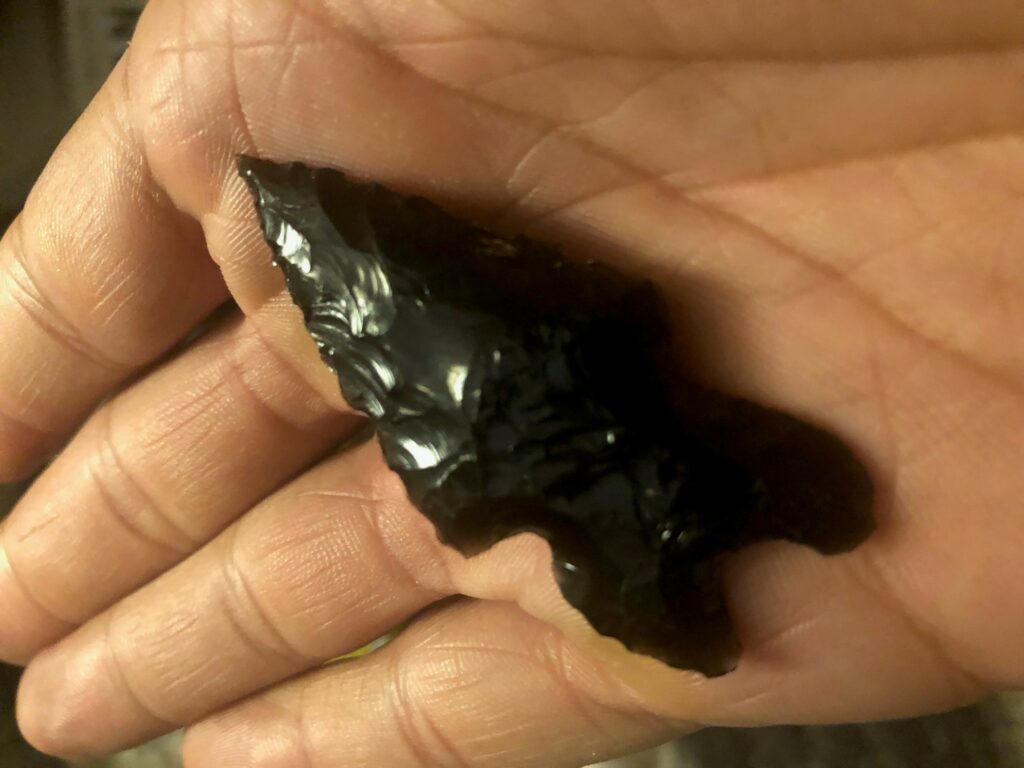Introduction
Our ancestors have used stone tools longer than any other type of tool to date. I cover the history of stone tool use throughout human history and across many different continents in a brief blog which I will link here if you are curious or need to more clarification. Even though many people are aware of the idea that our ancestors used stone tools to live, I don’t think they understand the efficiency, simplicity, and diversity of the tools that they relied upon.
Many think that stone tools lack in function and efficiency when compared to copper or steel tools of today and while that can be the case in certain areas, it is not always a true statement. After first getting into flint knapping and learning about how the use of the tools had evolved from simple tools (almost crafted by accident) into tools that took a lot of skill and were carefully crafted my mind was blown.
The tools ranged from a variety of different hand tools which were attached to wooden handles or other various methods. I personally find it fascinating and very human like to craft intricate tools with materials available to our natural surroundings. After spending some time flint knapping myself I can say that given the amount of limitations our ancestors had, they were highly talented and intelligent individuals, capable of adapting to their environment. Do note that not all stone tools were made from flint though. Many were ground to shape using a grinding stone of some sort. I will go more into detail regarding this subject when talking about said tools.
I hope to describe to you various types of flake tools, axes/celts, adzes, scrapers, arrowheads, knives and drills.
1. Flake Tools
As I discussed in my older blog linked above, some of the first tools created/used by our ancestors were flake tools. Flake tools are just sharp, thin pieces of rocks that were used for quick cutting. Many big game animals were butchered using simple flake tools due to their sharpness.
Some flakes I have felt from various stones are VERY sharp and could easily cut me if I applied any bit of pressure in any direction. Other types of bladelike flake tools were created from a stone with a flat surface where people would use antler, bone, or other hard materials to punch or directly knock flakes or blades from the stone/core. Flakes are also created as a byproduct to flint knapping due to the reduction of larger stone pieces into bifaces for more intricate tools. I also wrote a blog about how monkeys are being observed accidentally making flak tools as a byproduct of using the rocks as hammerstones (linked here).

2. Axe
Stone axes are another example of relatively simple tools that could also be considered to be more intricate in certain circumstances. Some stone axes were knapped from flint, though a majority were made of “soft stone” like granite and grinded down or pecked at with other rock to be shaped into an axe like shape. Some axes were ground to have groves towards the back as to be fastened or tied around for a better quality too with plant fibers or sinew (tendons strands from big game animals such as deer and elk)l, though this didn’t arise until more “recent” ages within North America.
Stone aces were used in the same way that modern axes are as you may have guessed. The only difference is that these tools are somewhat less efficient in removing wood material compared to iron and take a relatively long time to make in comparison to a blacksmith making an axe from a block of steel (if you remove finding/mining and smelting the iron).
That being said axes are primarily a wood working tool used to cutting down trees, splitting wood or removing large amounts of wood.
3. Adze/Celt
Adzes and Celts were also used for a variety of tasks, some of which included wood work. Adzes are pretty common in other countries today even though you don’t see them a whole lot in the United States within modern production. They kind of look like that of a hoe but are fastened directly to a wood insert and tied with the same cordage mentioned above as to compress the stone and prevent it from coming out.
Celts are kind of in this weird in-between zone. Some people claim that they were used like stone axes, but they lack the grove used to haft them to the handle. I have also seen images of people using Celts like adzes. I am personally confused in how they were used as it does not seem to be black and white.
Both tools are used for more intricate woodwork rather than cutting down trees, but I am sure a Celt could probably get the job done if that is what you wish. Many people also used adzes for tilling in the garden, which I thought was interesting. I would like to make one in the future as my flint knapping skill increases.
4. Scraper
Scrapers were a versatile and great tool to have around, especially for woodworking and animal harvesting. Scrapers were used to take off fine amounts of wood and were also used to help remove excess material from animal hides that need to be tanned. Scrapers could also be used to help clean bones and create more tools or clean them up for decorative purposes. This is important as without it, the hides would rot.
Scrapers were not always knapped form flint, but they are commonly found in rock form, though some were made from bone. These were an essential part of life for our ancestors who relied on fine craftsmanship to get them through a new season/year.
5. Arrowheads/Spear Points
Arrowheads and spear points are some of the most well-known types of stone tools. These are typically what most hobbyist and collectors are interested in finding due to their interesting appearance and exceptional craftsmanship, though there were definitely some poorly created points.
Both of these types of stone tools were hafted to the end of either a fore-shaft or directly to the shaft of an arrow or spear. These were hunting implements used for killing and harvesting game of various shapes and sizes via the use of the bow or atlatl. Many cultures or tribes had their own style of making and hafting these tools which is why when you look at archeological records across various continents there seems to be a lot of diversity in the size and design.
Typically these points are made of a knappable material like flint, chert, and silicified sandstone to name a few. They were created using natural recourses such as bone, wood, rock, and antler. Copper was used in certain instances, but that was usually around regions that had access to it. If you are curious in how these points may have been made check out my blog detailing the process or look at my flint knapping playlist on YouTube if you would like to see a visual representation. These tools are typically made from thicker flakes and are usually relatively intricate tools. These points range from a few inches long and wide to giant points greater than 3 inches, though larger points are uncommon.
Don’t doubt the efficiency of these tools to take down large game. Many of these tools were strong enough to kill bison and other large game. There are videos on YouTube where people use an atlatl to throw a spear and take down a bison with stone/”primitive” tools.
6. Knives
Stone knives are created using the same method as I mentioned above. Stone knives were created form the same material that they used to create arrowheads and stone points from and can range greatly in size, thickness, and length.
Many knives were used for cutting fibrous materials or pieces of meat, though blade tools mentioned above could also be used. It was most likely used similar to that of a pocket knife. It is a common tool that was used to do a lot of resource gathering for various items and housing materials.

Knife Artifact Pictured On Right
7. Drills
Another tool that was used to aid in the creation of tools and other projects is the stone drill. The stone drill had many different forms. Some drills were able to be used by hand, while others were made to be attached to some type of shaft/limb to be used in a downward motion or with a bow (bow drills/pump drills).
These tools were also typically made from a knappable material and repurposed from previous arrowhead/dart points. They were used to perforate many different materials ranging from wood to bone and even rock. Drills range between 2-4 inches and length and look like mini versions of hand axes to me.
Conclusion
It may be hard to imagine a world in which all the tools we had or needed were created by ourselves or someone we know within our community. I struggle sometimes to break free of the modern day convenience and mindless consumerism in that sense. I find it important to remind myself that you don’t have to buy everything you want. There is great reward in doing something yourself and understanding how something came to be from start to finish.
When I describe the amount of creativity, skill, and overall innovation our ancestors had to have in order to survive such a hard life, I find it motivational to try and implement that in my life. I realize that it is nearly impossible to do justice for the spiritual and existential impact that stone tools have on me. There is nothing more human that using the bare minimum to help make a task far easier.
Of the tools I mentioned today, there are far more that I didn’t list. Stone tools were used in almost every faucet of everyday living. Stone tools were used for tool creation, cooking, boat building, house building, hunting, resource gathering/foraging, gardening/farming, self-preservation, etc. I feel that if we as individuals were able to recreate this amount of self-reliance with metal tools at a community or state level a lot of the issues we see today would be cured or partially mitigated.
Just some food for thought though.
